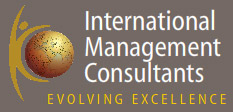


Poonam Datta | Founder & CEO
Post graduate in Marketing & Business Management, and with over 25 years of diversified experience with renowned multinationals. IMC is a vision that evolved from her knowledge of how individuals play a key role in business successes.
See Portfolio
WHAT IS ORGANIZATIONAL DEVELOPMENT
"A planned change process, managed from the top, taking into account both the
technical and human sides of the organization”
The following a few of most common OD Interventions, that most of the companies
practice:
1. Applying criteria to goals
2. Establishing inter-unit task forces
3. Experimentation with alternative arrangements
4. Identifying “Key Communicators”
5. Identifying “Fireable Offenses”
6. In-Visioning
7. Team Building
8. Inter-group Problem Solving
9. Management / Leadership Training
A BRIEF ON EACH OF THE ABOVE, WITH EXAMPLES
OD practitioners choose the most appropriate OD Intervention, to create "Planned
Change."
1. Applying criteria to goals
Here the leadership establishes objective criteria for the outputs of the
organization's goal-setting processes. Then they hold people accountable not
only for stating goals against those criteria but also for producing the desired
results.
Example:
Organizations are implementing the concept of Balanced Scorecard, X-Matrix etc.,
to capture the goals of the employees, which in turn is helpful in their
assessment and mid-term correction of their performance.
2. Establishing inter-unit task forces
These groups can cross both functional parts of the organization (the "silos")
as well as employee levels. They are ideally accountable to one person and are
appropriately rewarded for completing their assigned task effectively. Then they
disband.
Example:
Organizations have introduced various schemes for rewarding their employees for
their performance, like:
- Introducing the concept of Variable pay in as a part of CTC
- Spot Recognition Award
- Project bonus, performance bonus etc.,
3. Experimentation with alternative arrangements
Today organizations are subject to "management by best-seller." The goal in
these interventions is to create what is being called a "learning organization,"
one that performs experiments on organizational structure and processes,
analyzes the results, and builds on them.
Example:
Organizations today are targeting at streamlining the process of Learning and
Development and encouraging the culture of Learning in the organizations.
- Targeting achieving mandatory man-days of training for their employees
- Introducing the Competency based practices
4. Identifying "key communicators"
This is to carefully determine who seems to be "in the know" within the
organization. These people often do not know that they are, in fact, key
communicators. This collection of individuals is then fed honest information
during critical times, one-on-one and confidentially.
Example:
Defining the process of Organizational Communication policy
- Introducing Top – down and Bottom – up Communication approach
- Introducing Employee Forums and Suggestion Box options for employee
interaction
- Identifying Critical employees in the organization and making them the Brand
Ambassadors of their company
5. Identifying "Fireable Offenses"
This intervention deepens the understanding of and commitment to the stated
values of the organization. This facilitates the work of the Top Management to
answer the critical question, "If we're serious about these values, then what
might an employee do that would be so affrontive to them that he/she would be
fired?"
Example:
- Publishing and Instilling Values and Beliefs among all employees
- Introducing Policies like Whistle Blowing, Sexual Harassment etc.,
6. In-visioning
This is actually a set of interventions that help to "acculturate" everyone in
the organization into an agreed-upon vision, mission, purpose, and values. The
interventions might include training, goal setting, organizational
survey-feedback, communications planning, etc.
7. Team Building
This intervention can take many forms.
Example:
The most common is interviews and other pre-work, followed by a one- to
three-day offsite session. During the meeting the group diagnoses its function
as a unit and plans improvements in its operating procedures.
8. Inter-group Problem Solving
This intervention usually involves working with the two groups separately before
bringing them together. They establish common goals and negotiate changes in how
the groups interface.
Example:
This is practiced in Product Development Companies and most of the IT and ITES
Companies.
- Focused group discussion are encouraged by the management, for generating
better ideas and concepts
9. Management/leadership training
Many OD professionals come from a training background. They understand that
organizations cannot succeed long term without well-trained leaders. The OD
contribution there can be to ensure that the development curriculum emphasizes
practical, current situations that need attention within the organization and to
monitor the degree to which training delivery is sufficiently participative as
to promise adequate transfer of learning’s to the job.
Example:
Most of the organizations today are focusing at Leadership Management for their
employees. Earlier, this was targeted to the Top Management alone, but now,
organizations are seeing its relevance to inculcate the leadership skills in
their middle management and junior management as well.
- Business Organization Retreat (BOD) is being the most common practice, is a
part of this initiative.